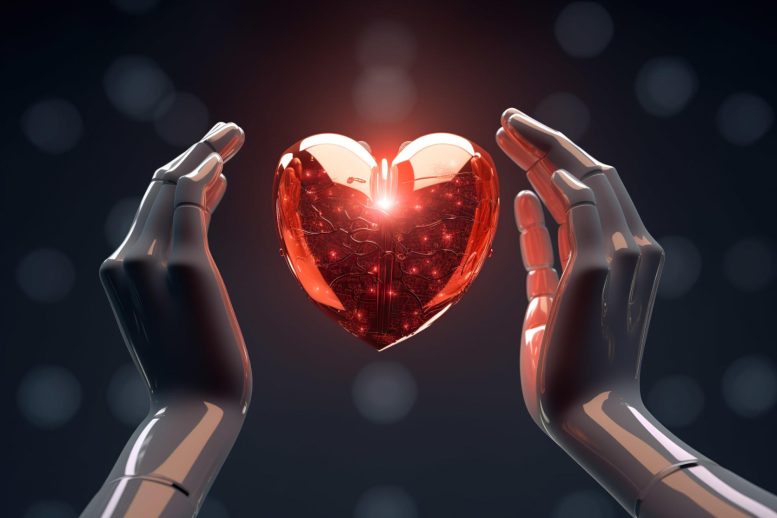
Scientists have developed an AI model that accurately identifies cardiac functions and valvular heart diseases using chest radiographs. The research could supplement traditional echocardiography, improve diagnostic efficiency, and be especially useful in settings lacking specialized technicians.
Scientists unveil groundbreaking and accurate AI-based methods for classifying cardiac function and disease using chest X-rays.
While artificial intelligence (AI) might often be perceived as an emotionless, machine-driven system, researchers at Osaka Metropolitan University have revealed its potential to deliver heartwarming—or, more to the point, “heart-warning”—support.
The team has developed a groundbreaking application of AI that categorizes heart functions and accurately identifies valvular heart disease, highlighting ongoing strides in integrating medical science and technology to improve patient outcomes. The findings were recently published in the journal The Lancet Digital Health.
Valvular heart disease, one cause of heart failure, is often diagnosed using echocardiography. This technique, however, requires specialized skills, so there is a corresponding shortage of qualified technicians. Meanwhile, chest radiography is one of the most common tests to identify diseases, primarily of the lungs. Even though the heart is also visible in chest radiographs, little was known heretofore about the ability of chest radiographs to detect cardiac function or disease.
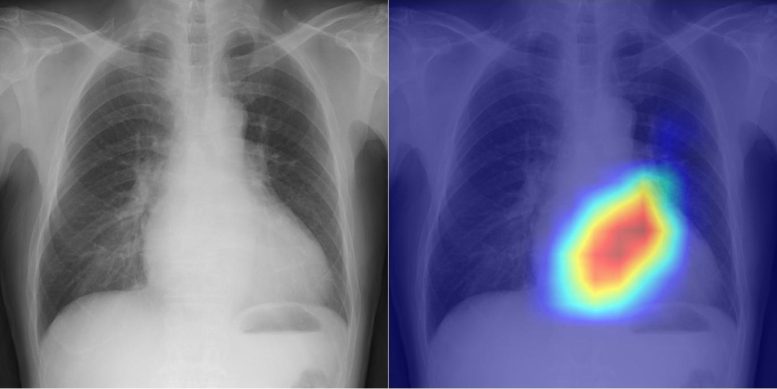
Left: Chest radiograph Right: Visualization of the grounds for the AI’s judgment. Credit: Daiju Ueda, OMU
Chest radiographs, or chest X-rays, are performed in many hospitals and very little time is required to conduct them, making them highly accessible and reproducible. Accordingly, the research team led by Dr. Daiju Ueda, from the Department of Diagnostic and Interventional Radiology at the Graduate School of Medicine of Osaka Metropolitan University, reckoned that if cardiac function and disease could be determined from chest radiographs, this test could serve as a supplement to echocardiography.
Dr. Ueda’s team successfully developed a model that utilizes AI to accurately classify cardiac functions and valvular heart diseases from chest radiographs. Since AI trained on a single dataset faces potential bias, leading to low accuracy, the team aimed for multi-institutional data. Accordingly, a total of 22,551 chest radiographs associated with 22,551 echocardiograms were collected from 16,946 patients at four facilities between 2013 and 2021. With the chest radiographs set as input data and the echocardiograms set as output data, the AI model was trained to learn features connecting both datasets.
The AI model was able to categorize precisely six selected types of valvular heart disease, with the Area Under the Curve, or AUC, ranging from 0.83 to 0.92. (AUC is a rating index that indicates the capability of an AI model and uses a value range from 0 to 1, with the closer to 1, the better.) The AUC was 0.92 at a 40% cut-off for detecting left ventricular ejection fraction—an important measure for monitoring cardiac function.
“It took us a very long time to get to these results, but I believe this is significant research,” stated Dr. Ueda. “In addition to improving the efficiency of doctors’ diagnoses, the system might also be used in areas where there are no specialists, in night-time emergencies, and for patients who have difficulty undergoing echocardiography.”
Reference: “Artificial intelligence-based model to classify cardiac functions from chest radiographs: a multi-institutional, retrospective model development and validation study” by Daiju Ueda, Toshimasa Matsumoto, Shoichi Ehara, Akira Yamamoto, Shannon L Walston, Asahiro Ito, Taro Shimono, Masatsugu Shiba, Tohru Takeshita, Daiju Fukuda and Yukio Miki, 6 July 2023, The Lancet Digital Health.
DOI: 10.1016/S2589-7500(23)00107-3

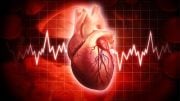

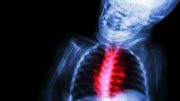
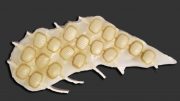
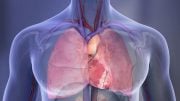
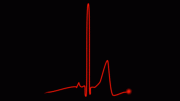
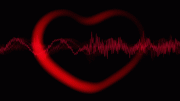
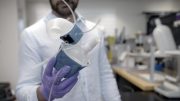
That is very interesting I love to see if there are many different kinds of heartbeats and how the how hard they triggering the pressure points that they have in the heart compared to other people’s cuz he’s heart functions going to have its own little movement palpitation whatever you want to call it that triggers at a different muscle flex pressure I guess fibrillation. I bet some of them even go with our combined together make up that of the Earth very curious indeed
Jeffrey Archer, I resonate with what you’re saying. Food for Thought. 👌